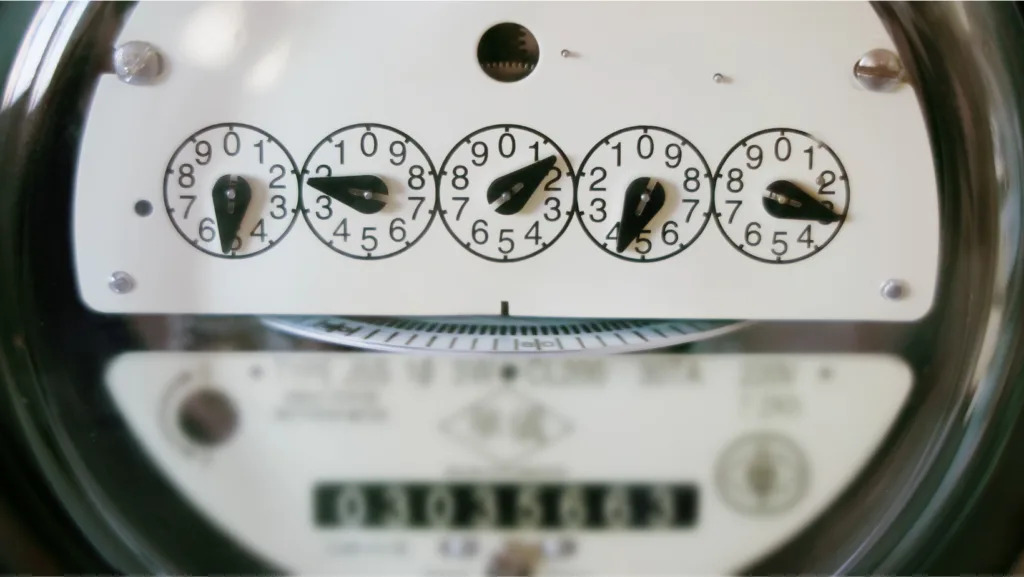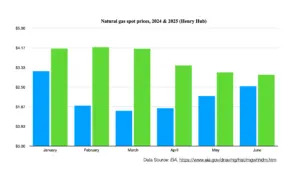
Getty Images
Higher electricity bills are customary during a Louisiana summer, but 2025 has seen an especially sharp spike, reaching levels not seen since 2022.
Except for January, the average monthly cost of electricity in Louisiana has been higher every month compared with last year.
The average July bill for a Louisiana home that uses 1,000 kilowatt-hours was 8% higher than the same month last year, according to data from the Louisiana Public Service Commission. The figures are self-reported by the utility companies under its jurisdiction.
Cleco customers are seeing some of the highest bills in the state. The company serves roughly 295,000 customers across 24 parishes. For July, it reported a 29% average bill increase from a year ago, going from $123 to $159. Southwestern Electric Power Cooperative, which serves about 235,000 Louisiana customers, reported a 20% increase, from $126 to $151, and the 1.1 million customers who get their power from Entergy Louisiana saw an average increase of 11%, from $129 to $143.
The last time the average sized home saw monthly bills that high was in the summer of 2022. In July of that year, a Cleco customer paid about $157, and an Entergy Louisiana customer paid roughly $159.
State regulators and utilities say the trend is linked to an increase in the price of the natural gas utilities use to run power plants. The biggest spike in spot prices of natural gas occurred in March, reaching $4.12 per million BTUs compared to $1.49 from March 2024, though that gap has shrunk steadily since then.
Entergy is allowed to pass the higher cost of natural gas down to customers, labeling it as a fuel adjustment cost on their bills.

“These are costs that Entergy Louisiana does not earn a profit on, and it is only the actual costs the company incurs which are paid by customers,” Entergy Louisiana spokesman Brandon Scardigli said.
While still higher than last year, natural gas prices have trended downward since March, signaling a reprieve might be on the horizon for customers. In June, the spot price was down to $3.02 per unit compared to $2.54 a year ago. Cooler temperatures as summer transitions into fall would help that trend, according to analysts.
SWEPCO spokeswoman Shantell Jordan said an extra fuel adjustment charge customers have been paying on will decrease this month.
Foreign demand for liquified natural gas is behind the increase in commodity prices, Louisiana State University economist David Dismukes said. LNG exports in May were 18% higher than a year ago, with most of it going to Europe, Japan, South Korea and Egypt.
Because of high natural gas prices, some electricity generation shifted to coal. Nationwide, power plants are using nearly 5% more coal, and coal imports for the first quarter of 2025 nearly doubled from the same period last year. Foreign coal has fallen in price, down 39% from a year ago, according to U.S. Energy Information Administration data. In the first quarter, the U.S. imported Colombian coal at an average price of $117 per short ton and exported domestic coal at a price of $110 per short ton. Domestic coal sold at a spot price of about $79 per short ton in July.
Fuel costs are not the only reason behind higher power bills. Dismukes said utility companies share part of the blame for failing to make infrastructure investments that could deliver electricity much more efficiently and save their customers money. Louisiana’s electrical grid has many aging transmission and distribution lines that are wasting power, and utilities have only recently begun to address the issue, he said.
“For them to sit there and say, ‘We don’t have any control over that,’ just isn’t true,” Dismukes said. “ … In Louisiana, we are behind the curve on this issue.”
Possible solutions include more affordable and cost-stable energy sources, such as utility-scale solar and onshore wind. Both are cheaper than natural gas even without government subsidies to support setting up the alternative energy sources, according to the latest yearly analysis from the financial firm Lazard.
Reconductoring — the process of replacing existing transmission lines with advanced, more efficient conductors — could save customers up to 4% on electricity prices, according to a nonpartisan GridLab study.
Rather than upgrade existing lines, utility companies have opted for more time-consuming, more expensive regular conductor lines. Building new transmission is generally more expensive than reconductoring and typically takes two to three times longer to complete, according to the study. Those costs are also passed down to customers.
Consumer advocates also note there is a disincentive for utility companies to deliver power more efficiently; it generally means they sell less electricity and see less profit.
SUBSCRIBE: GET THE MORNING HEADLINES DELIVERED TO YOUR INBOX






Comments